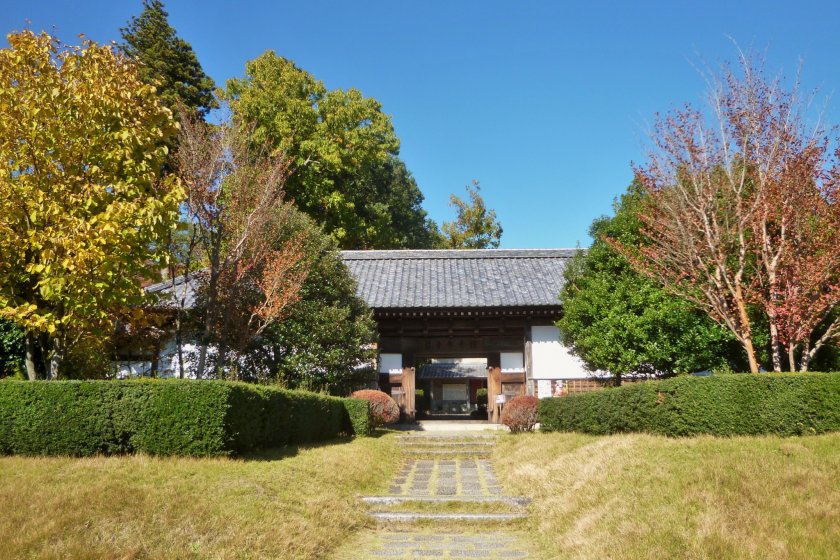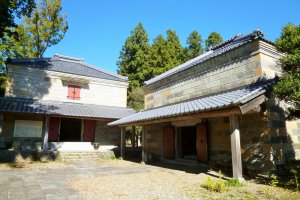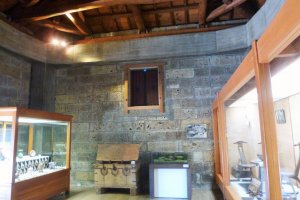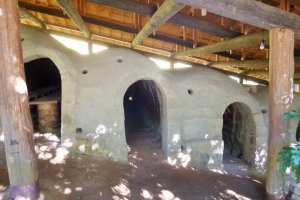Most people travel to Mashiko to visit its famous pottery festival and/or to shop for Mashiko-ware along its main street. However, to gain a greater appreciation of what you are purchasing, a visit to the Mashiko Sankokan Museum is a must.
The museum was established by Shoji Hamada, a master potter who became the first person designated a Japanese Living National Treasure in 1955. The museum is a collection of traditional buildings - five in which exhibits are housed, a chambered climbing kiln, and Hamada's studio. The exhibits are made up of Shoji Hamada's personal collection of ceramics, textiles, lacquer ware, etc. that are said to have influenced him over the years. In addition, the museum exhibits his own work and pieces by fellow potters, Kanjiro Kawai and Bernard Leach.
Mashiko was a pottery town long before Shoji Hamada established his workshop and home there. However, as a leader of the mingei folk-art movement, Hamada helped Mashiko make a name for itself on the world stage and as a destination for tourism.
If you start in the center of town facing the giant ceramic tanuki (raccoon-dog), walk to the right along the main street (Route 230). In about ten minutes, you'll reach a stoplight and a Lawson's convenience store. Cross the street and walk down the narrow one-lane street to your left. You'll come to a large parking lot (on your left), and the entrance to the museum will be on your right.
The five traditional buildings that make up the museum are beautifully laid out in a large compound full of trees, shrubs, and flowers. Due to its location slightly outside the center of town, the museum is almost always very quiet. On my last visit, there were only two other guests and this was during the pottery fair when the town is always at its busiest.
As you wander through the exhibits, pay close attention to Hamada's pottery. In creating it, everything has come from local sources; the clay, glazes, and even his brushes - which he made himself from bamboo and animal hair. To hold a genuine piece of Hamada's work in your hands, be sure to take a short break for a cup of tea or coffee in the museum's café.





































